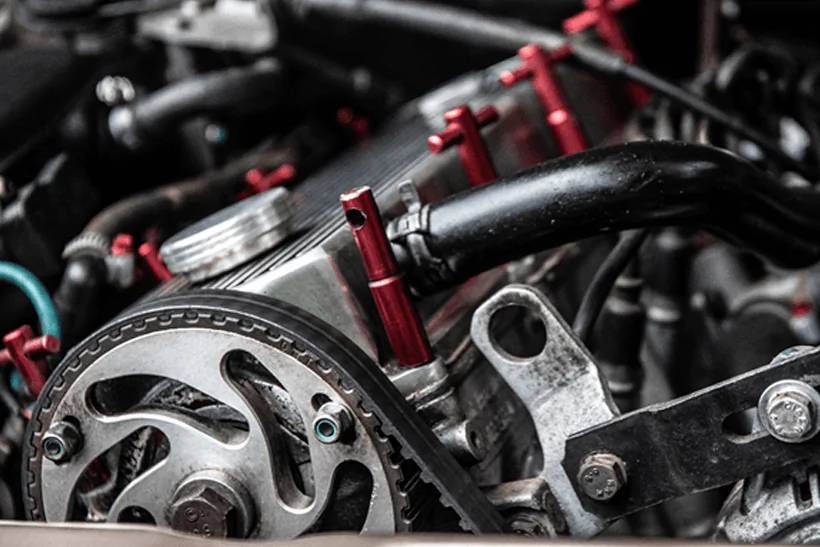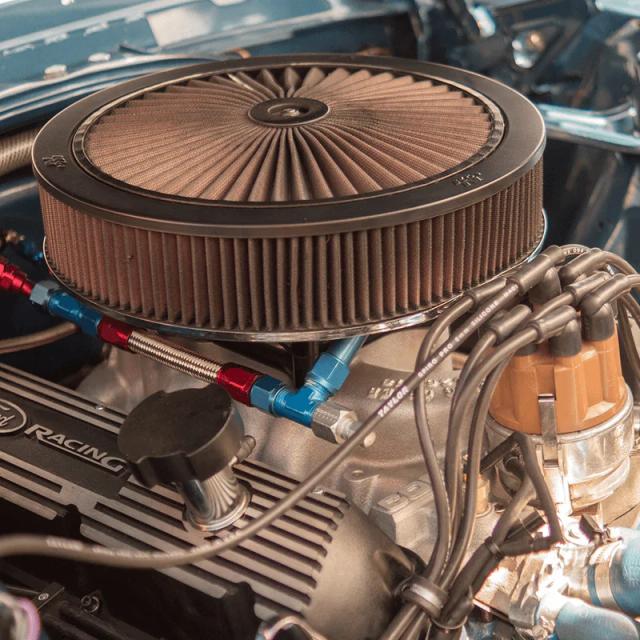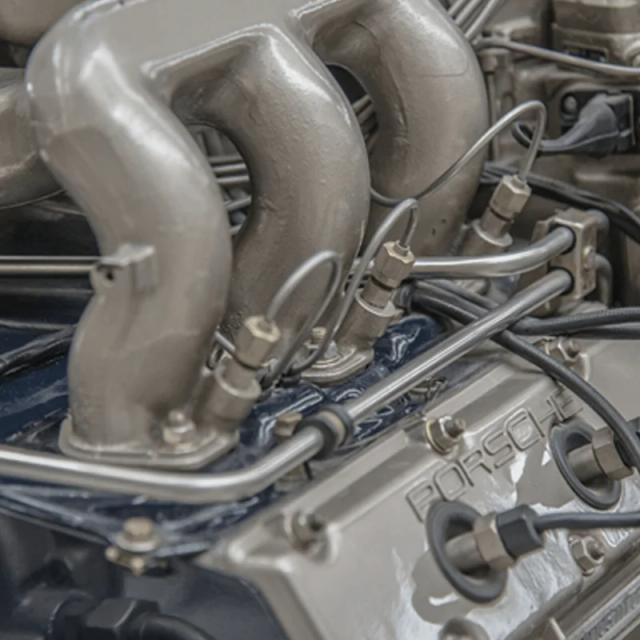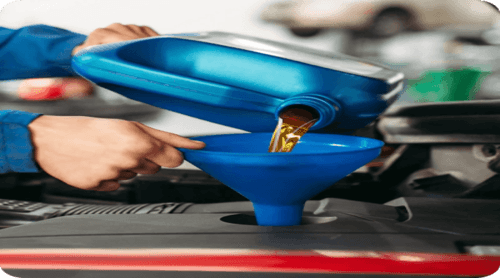
First things first, a cambelt is a timing belt. They're exactly the same component; we'll refer to both names in this guide.
Whatever model of car you have, it will have a cambelt (timing belt), but you may not know what it does. Here, we'll take you through what a cambelt is, when to replace it, and how to do it yourself. It's vital to be able to check, maintain and replace this essential part of your car engine. This timing belt guide will give you all the necessary information to ensure it functions correctly.
If your timing belt or its components need replacing, just go to our belt drive page, where you can get your vehicle's timing belt accessories, including a new timing belt kit.
In this guide, we'll start with some basic understanding of a cambelt or timing belt before outlining how you can replace your cambelt yourself and how to check your timing belt to see whether your vehicle needs a new one.
In this guide, we'll be covering the following:
What Is a Cambelt and What Does It Do?
What Is the Difference Between a Timing Belt and a Timing Chain?
Why Does the Cambelt Need Changing?
When Does a Cambelt Need Changing?
How to Check if Your Cambelt Needs Changing
What Happens if the Cambelt Breaks?
How Much Does a Cambelt Change Cost?
How Do You Change a Cambelt? 10 Easy Steps
Timing Belt Know-How
What Is a Cambelt and What Does It Do?
The cambelt or timing belt is made of sturdy materials like Kevlar and polyurethane. It can be confusing to understand precisely what a cambelt does, but essentially, it regulates the way your engine works.
It controls the opening and closing of the valves to your engine's cylinders. This ensures that your engine's combustion happens correctly. While the cambelt controls each of the valves opening, the crankshaft simultaneously moves the pistons up and down. It's vital that your cambelt is working correctly and the crankshaft works in sync with it, as it regulates your car's combustion to keep it running smoothly.
What Is the Difference Between a Timing Belt and a Timing Chain?
You might have heard of a timing belt and a timing chain, but these two parts perform different functions, and it's helpful to understand what they both do. The most obvious difference is that a timing chain is made of metal, contrasting with a plastic or synthetic cambelt. The timing chain in your vehicle is located inside the engine and, therefore, is lubricated by the engine oil. In contrast, cambelts are located outside the engine.
However, some manufacturers have begun using new parts called 'wet belts', which are like timing chains and run inside the engine. Timing chains often don't need to be replaced as often as cambelts because the metal they are made of is stronger than the materials used to construct cambelts. This is also because they are lubricated by engine oil, whereas cambelts can get dry and crack over time.
Why Does the Cambelt Need Changing?
Like many parts in your car, the cambelt will eventually wear out. The reason it's crucial is that it can obstruct the combustion in your engine if you don't keep it maintained and replaced regularly. If the cambelt snaps or tears, then it can cause a lot of damage to your engine.
Here's what can happen if your cambelt snaps:
If it breaks while you are driving, it's possible for the engine to seize up, and this can cause the steering and the brakes to cease working.
The pistons can hit the valves in the engine's cylinders, damaging them.
A non-interference engine will usually suffer less damage, but there will still be some.
When Does a Cambelt Need Changing?
Cambelts need to be replaced, as they wear out over time. But there's no exact time to wait before you replace one. Different car makes and models will need their cambelt changed more frequently, while others will have them last for longer. It also depends on how much you drive your car.
Commonly, your vehicle's manufacturer will recommend changing the cambelt after a certain number of years or miles driven. This might be in the range of 40,000 – 100,000 miles driven or four years. Ask your manufacturer or the dealer where you bought the car, and see if they have specific advice on the model you drive.
How to Check if Your Cambelt Needs Changing
It's beneficial to spot the signs in your cambelt that show it needs replacing. Make it a habit to check these things regularly to ensure the timing belt is working. It also means that you can change it quicker before it causes any damage to your engine by breaking.
Your Car Won't Start
If your car fails to start unexpectedly, it might be due to an issue with the cambelt. This is because if the cambelt breaks, the camshaft won't rotate when the crankshaft turns, making the car unable to start. It's best to keep up with regular checks on your vehicle to ensure this doesn't happen and disrupt your commute, holiday, or shopping trip.
The Engine Is Making a Rattling Noise
The other key sign to look out for is whether any strange noises are emitting from your engine. If your cambelt is about to fail, you might hear a friction sound from your engine. You should call a mechanic if you hear this coming from your car, as it's likely that the cambelt needs replacing and might be about to snap.
The Cambelt Looks Worn
The easiest way to check if the timing belt needs replacing is to examine it closely. A clear sign that the timing belt is becoming worn is that it has become glossy and smooth on the underside – it shows that the rubber of the cambelt is getting worn. So, it won't be as flexible as it needs to be.
If the belt is cracked or torn, it must be replaced immediately. You can also do a pressure test – try pressing a screwdriver or your fingernail into the rubber of the cambelt. If it doesn't leave an indentation, the belt has become too hard and needs replacing.
What Happens if the Cambelt Breaks?
If you're unlucky enough to have your timing belt break, the type of engine you have will determine how much damage occurs. Engines are split into interference engines and non-interference ones. An interference engine is a 4-stroke internal piston engine where one or more valves in the fully open position extend into an area where the piston might travel. But in a non-interference engine, the piston doesn't travel into any part where the valves open.
Interference engines use the timing gears, belts, or chains to stop the piston from striking the valves – it does this by ensuring that the valves are closed when the piston is close to the top centre area. So, in an interference engine, a cambelt breaking can cause a lot of damage to the valves and other engine parts. A non-interference engine typically doesn't get as damaged.
How Much Does a Cambelt Change Cost?
The cost of having a mechanic change your cambelt will vary depending on the model of your car, but it can range from £200 up to £1,000 for certain replacements. However, cambelt changes typically cost around £300 - £600. This is because changing the cambelt involves taking apart pieces of the engine and putting it all back together again.
This can take a few hours, meaning you need to pay for the labour costs of the change. Many people choose to do a cambelt replacement themselves because it's possible to find the cambelt for around £100, which is much more cost-effective than paying for a garage to do the change.
How Do You Change a Cambelt? 10 Easy Steps
So, what can you expect if you've decided to take the plunge and change your cambelt yourself? It can feel overwhelming at first to contemplate taking your engine block apart. Still, once you've done it, you can save yourself some cash whenever your timing belt needs changing.
Here, we'll take you through how to change your cambelt, complete with a video that you can watch while you read through our instructions so you can be sure you know how to make a start.
Step 1 - Find the Right Timing Belt for Your Car Model
Before you take apart the engine, you'll need to acquire the right timing belt for your vehicle. The owner's manual of your car will show you which type of cambelt you need, and then you can look at car part suppliers for one that matches.
If you don't have the manual, or it doesn't give you this information, take your car to your nearest car parts dealer and tell them the make and model of the vehicle. From this, they should be able to find the right car part. You can also use the GSF search tool to type in your car's registration number or mode and find the perfect timing belt to fit the vehicle.
Step 2 - Replace Your Gaskets and Adhesive
Since there has been some decay or damage to your timing belt, replacing your gaskets and gasket adhesive is wise. The car parts supplier you get your new cambelt from should also know what gaskets you need, and then you'll be ready to get started.
Step 3 - Disconnect the Battery
The first thing to do when replacing the cambelt is to disconnect the car's battery. This is very important, as not disconnecting it will result in electric shocks as you take apart the engine.
To do this, disconnect the negative battery cable from its terminal – you don't need to take the battery out entirely, as breaking the continuous circuit is enough to ensure you won't get a shock. If you think there might also be a problem with your battery, you can check out our guide to choosing, charging and changing car batteries.
Remember that you might need to enter a code to regain access to your electrical devices, such as radios, Sat-Navs, and anything else you've set up to run off your car's electricity. This is because those devices will reboot and need to log in again. Write down any codes you'll need before disconnecting the battery if you're liable to forget them.
Step 4 - Take Out the Alternator Belt
The alternator belt (also known as a drive belt or serpentine belt) is a belt that's smaller than the timing belt and located on top or in front of the timing belt. Loosen the nuts to create some slack in the belt, then remove it. You will also have to take out the drive belt (serpentine belt) in some car makes and models. If it's not in the way, it can be left in, but if it's obscuring you getting into the engine, remove it.
Be careful not to remove any pressurised fittings, which will cause other engine problems. Read our detailed alternator guide for more details on what an alternator is and what it does within your car.
Step 5 - Remove Anything Else in Front of the Timing Belt
It will be easier to remove your cambelt if you remove anything in its way. Things like the power steering pump and the air conditioning compressor will often obstruct you from reaching the cambelt, so these can be removed. If your vehicle has a distributor cap, this will also need to be taken out, which will require removing both screws and clips.
However, you might not need to do this, as many modern cars have electric ignitions and aren't built with distributors. If you need clarification about how to find the distributor or whether your vehicle has one, check your owner's manual, which should contain these details.
Step 6 - Check the Alignment of the Cambelt
Look at the timing marks and rotate the crankshaft so that the marks align with the 0 that you can see on the timing scale. This should be done with a spanner. You'll need to remove all the screws and bolts that keep the cover of the cambelt in position. Then, remove the cover. Check that the crankshaft and the camshaft marks are aligned with each other. There will be dots and lines on both shaft heads that must be lined up.
Step 7 - Remove the Cambelt
Now, you can start removing the timing belt. Before you do, take a picture of it in your car so you can be sure to get the new one in the correct position. Then, ensure there are no leaks (oil or water) around where you're working, and loosen the bolts that keep the belt tensioner in place. This will create slack and allow you to slide the timing belt off and remove it.
Step 8 - Position the New Cambelt
Place the new cambelt where you'll need it to be, and ensure it's positioned precisely the right way before you move forward any further. Use the photo you took or look at your model's owner manual to ensure you correctly positioned the timing belt in place.
Step 9 - Put the Engine Back Together
Now that you have positioned the new cambelt, you can put the rest of the engine back together. Take all the parts you have taken out and add them back into the engine, replacing them so that they are all positioned in the same way they were before you took them out. You should replace the parts in reverse order to how you took them out.
Step 10 - Test Drive Your Car
Now that you've put the engine back together, it's time to check that you've done everything correctly and that the new cambelt works. The best way to do this is to give your vehicle a test drive. Take the car onto some quiet roads and test whether it drives smoothly. If this goes well, you can rest assured that you have successfully changed the cambelt!
Timing Belt Know-How
By following these steps, you should be able to change your cambelt and save yourself some money on car maintenance. To find the right timing belt for your car, try out our search tool that allows you to find the right car parts for your vehicle.
If this is the first time you have changed a cambelt, it's a good idea to use one of our timing belt service kits, which contain everything you'll need to make this sometimes daunting job easier. It comes with a new timing belt, tension pulleys , and an idler, so it can cut down on the time that the job takes. Here at GSF, we also offer a full range of timing belt parts to allow you to repair your vehicle.
Just type your car's registration into our website, and we'll put together a kit of all the right parts to get you on the way to a new cambelt. By using our tips and following these key steps, you can maintain, check, and replace your timing belt, preventing damage to your vehicle and keeping it running smoothly.
Shop Timing Belts at GSF Car Parts Online and In-Store
All our timing belts are from trusted brands in the motoring industry, so you can count on them to be reliable and of excellent quality. Plus, our low-price promise means you can always expect great value, too.
We offer free UK delivery on all online orders over £25, plus 60-day returns*. We also know you want to get your car up and running as soon as possible, which is why we offer a Click and Collect service that allows you to get your new timing belt in just an hour.
So, buy timing belts from us with confidence today. Or if you're close to one of our 180 store locations across the UK & Ireland, drop by. Our experienced staff will be able to direct you to the correct part for your vehicle.





